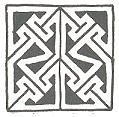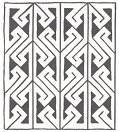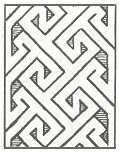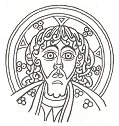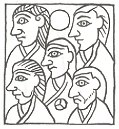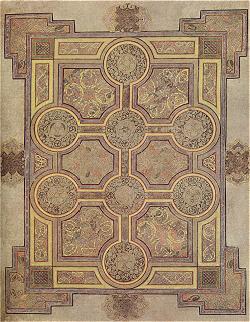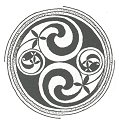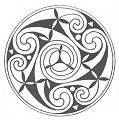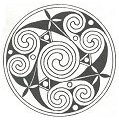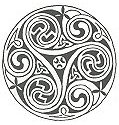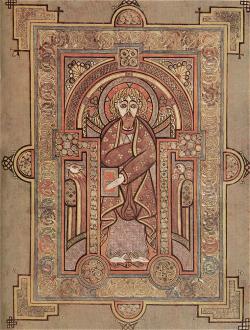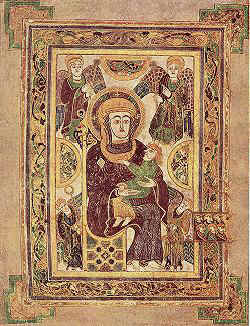|
In earlier books so called Carpet pages were often popular. Named because of
their resemblance to woven textiles, the Book of Kells however contains only
one of these pages, shown above. It contains two interlinked crosses with
the rest of the page consisting mainly of abstract decoration. Inside the
various panels can be seen spirals and key patterns as well as many
interlaced knotwork human and animal forms. These bright ornamentations were
produced with a range of animal, vegetable and mineral based inks. The text
for example was written with ink derived from the pulp of oak apples mixed
with iron sulphate while red and white lead, chalk and woad were readily
available to the illustrators. Deep blues could be produced by using lapis
lazuli imported from Afghanistan, pinks came from the turnsole plant (called
Folium), bright red from a Mediterranean insect (Kermes) and yellow Orpiment
from arsenic sulphide.
|
|
Two Portrait Pages survive in the Book
of Kells, along with a single portrait that is believed to represent
Christ Himself. One page is dedicated to St. John while the page above
illustrates St. Matthew. He is shown in front of a high throne with a
large halo around his head and holding a copy of his Gospel, surrounded by
the symbols of the other tree evangelists. In the arch above him, the
scribes have filled the space with key-patterns - complex panels of
repeating and interlocking geometrical shapes used throughout the book and
in all manner of Celtic artifacts.
|
|
This Illustration Page is one of three
contained within the Book if Kells, the other two show the Arrest of
Christ and the Temptation of Christ. The Virgin and Child, taken from St.
Matthew's Gospel, demonstrates how the representation of humans had
changed from the early abstract form of the old Celts to the more
figurative approach seen in manuscripts and on the great stone crosses of
the period. It is interesting that the Virgin wears Greek robes (a
maphorion), and it is believed that the illustration is based on an
original that could have come from the Eastern Church of Byzantium. This
theory is borne out by the devices that the surrounding angels are
carrying - they are flabella's - a fan used by the deacons in the Eastern
Church to keep flies from the altar and used in this case as a symbol of
purity. |

